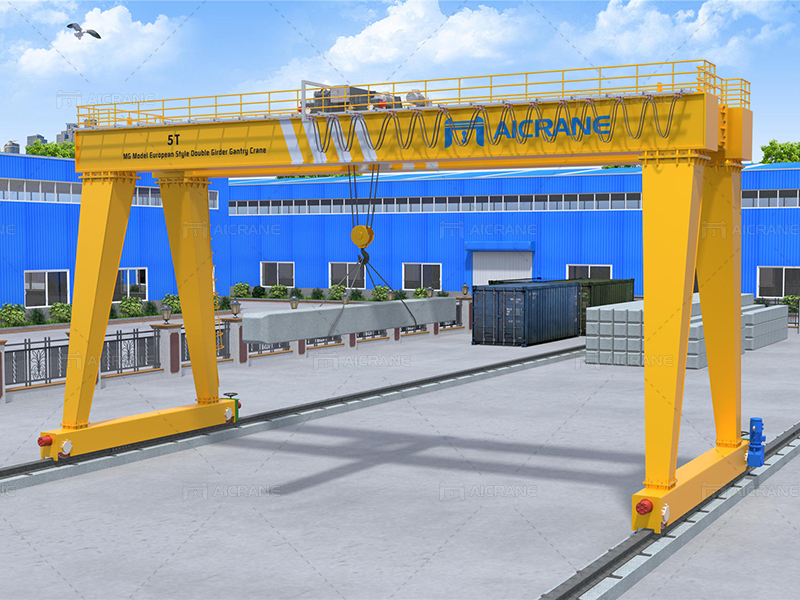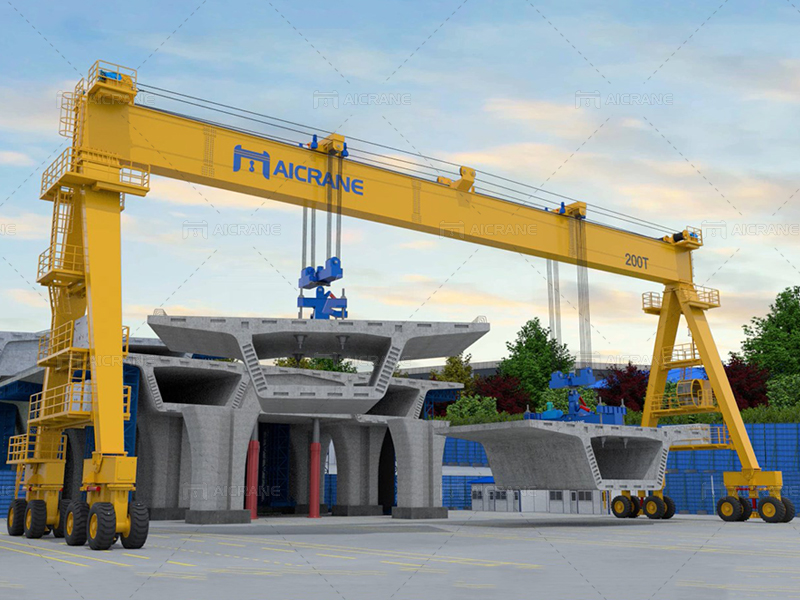Gantry cranes play a vital role in various industries in the Philippines, from construction sites to manufacturing facilities and bustling ports. These powerful lifting machines are indispensable for efficient material handling, but their safe and reliable operation is of paramount importance. To ensure the well-being of workers and the integrity of cargo, the Philippines has established regulations and standards governing gantry crane operation. In this article, we will explore these regulations and standards, highlighting their significance in maintaining a high level of safety and efficiency in the country’s industries.

Understanding Gantry Cranes
Before delving into the regulatory framework for gantry crane operation, it’s essential to have a basic understanding of what gantry cranes are and how they function. Gantry cranes in the Philippines are heavy-duty lifting machines equipped with legs or supports that straddle the object or area to be lifted. They are used to move and position heavy loads, making them invaluable in various industries.
Gantry cranes come in different types, including single and double girder gantry cranes, rubber-tired gantry cranes (RTGs), and semi-gantry cranes. Each type is designed to fulfill specific material handling needs, and they can vary in lifting capacity, span, and other features.
The Regulatory Framework for Gantry Crane Operation
In the Philippines, as in many other countries, the operation of gantry cranes is subject to regulations and standards designed to ensure safety and operational efficiency. These regulations are implemented and enforced by relevant government agencies and industry bodies. Let’s explore the key elements of the regulatory framework for gantry crane operation in the Philippines.
Occupational Safety and Health Standards (OSHS)
The primary legal framework for workplace safety and health in the Philippines is the Occupational Safety and Health Standards (OSHS). These standards are outlined in the Department Order No. 13 Series of 1998, also known as the “Guidelines Governing Occupational Safety and Health in the Construction Industry.” While this order primarily focuses on construction, it includes provisions for the safe use of lifting equipment, including gantry cranes, within construction sites.
The OSHS establishes requirements for crane operators’ qualifications, operational safety, and maintenance practices. Employers are responsible for ensuring that workers are adequately trained to operate gantry cranes safely, and they must conduct regular inspections and maintenance to keep the equipment in good working condition.
Technical Safety Regulations
The Philippines’ Department of Labor and Employment (DOLE) sets out technical safety regulations through various guidelines and circulars. These regulations address the safe use of lifting equipment, including gantry cranes, in different industries.
For example, DOLE’s Department Advisory No. 1, Series of 2015, provides guidelines on the safe operation of cranes, derricks, hoists, and other similar equipment in construction and industrial workplaces. It outlines the specific requirements for crane operators, inspections, and safe work practices.
Philippine Ports Authority (PPA) Regulations
In the context of ports and container terminals, the Philippine Ports Authority (PPA) plays a crucial role in overseeing and regulating gantry crane operations. The PPA sets its own guidelines and regulations to ensure the safe and efficient operation of cranes, particularly rubber-tyred gantry cranes (RTGs) used for container handling.
PPA Circular No. 14-2003 prescribes the safety regulations for container handling equipment, including RTGs, in all ports under the jurisdiction of the PPA. The circular covers aspects such as equipment maintenance, operator training and certification, and safety procedures during loading and unloading operations.

Philippine Society of Mechanical Engineers (PSME)
The Philippine Society of Mechanical Engineers (PSME) is an important professional organization that contributes to the development and promotion of engineering practices in the country. PSME plays a role in setting and disseminating industry-specific standards and best practices for mechanical engineering, which can include guidelines for crane operations and maintenance.
These standards are not legally binding, but they serve as valuable references for companies and professionals involved in gantry crane operation. They help in fostering a culture of safety and continuous improvement within the industry.
Safety Measures and Practices
Beyond the legal regulations and standards, there are various safety measures and practices that are integral to ensuring the safe operation of gantry cranes in the Philippines:
Operator Training: Proper training and certification of crane operators are critical. Operators must be knowledgeable about the specific gantry crane they are operating and trained in safety protocols, load-handling techniques, and emergency procedures.
Equipment Inspection and Maintenance: Regular inspections and maintenance are essential to identify and rectify issues with gantry cranes. Any defects or wear and tear should be addressed promptly to prevent accidents.
Load Limit Compliance: It is crucial to adhere to the crane’s load capacity, as exceeding this limit can result in structural damage, equipment failure, and potential accidents. All loads should be properly weighed and secured.
Safe Work Practices: Establishing safe work practices, such as maintaining clear communication between operators and ground personnel, implementing proper signaling, and observing safe lifting and lowering procedures, is essential for accident prevention.
Emergency Response: Having well-defined emergency response procedures, including immediate shutdown protocols in case of emergencies, is vital. All personnel involved in crane operations should be familiar with these procedures.
Continuous Training and Certification: Ongoing training and certification programs should be in place to keep crane operators updated on the latest safety practices and technology.
Conclusion
The Philippines places a strong emphasis on safety and efficiency in gantry crane operations. The regulatory framework, consisting of legal standards, technical guidelines, and industry-specific regulations, plays a crucial role in ensuring the well-being of workers and the integrity of cargo during crane operations.
Compliance with these regulations is not only a legal requirement but also an ethical responsibility for all stakeholders involved in gantry crane operations. By prioritizing safety, following established guidelines, and continuously improving practices, the Philippines can maintain a high level of safety and efficiency in various industries that rely on these powerful lifting machines. Gantry cranes will continue to be essential tools in the country’s growth and development, contributing to a robust and vibrant economy.
